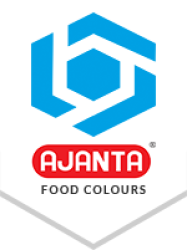Australia, officially known as the Commonwealth of Australia, is a vast country, known for its vast landscapes, unique wildlife, and beautiful islands. Australia is situated on the smallest continent on Earth, Oceania. As an island nation, Australia does not have land borders with any country. It shares maritime borders with the Indian Ocean to the west and the Pacific Ocean to the east. Australia has a strong, diverse economy driven by sectors like mining, agriculture, manufacturing, and services.
One of the pillars of Australia’s economy is its manufacturing sectors, which span food, cosmetics, pharmaceuticals, personal care products, to pet food. These big manufacturing industries of Australia support both domestic and export demand of the country. In the manufacturing of any product, various small and larger components play a crucial role. Some help in the manufacturing of products, and others in improving their visual appeal. Colour is one of those components that provides the final visual appeal to products and makes them attractive for consumers. These vibrant and appealing coloured products improve the sales and brand recognition of the product in the market.
Australian colour manufacturers are not able to prepare enough colours to fulfill the country's colour-related demands. To fulfill this gap, manufacturers import colour from other countries as well. Some of the countries that export colours to Australia include India, China, and the United States of America. Also, many synthetic food colour suppliers, colour merchants, and big colour distributors in Australia import colours from other countries like India at low prices and sell them in Australia at high prices, making a profit on each sale. Some of them sell the colourant under the same brand name from which they bought the colour, while others create their own branding and sell it under their brand name.
Australian Industries Where Colours Play a Vital Role
In Australia, colours play a key role in many manufacturing industries. Some of the primary industries where colours are crucial include:
Food and Beverages Industry
In the food and beverage industry of Australia, colours play a crucial role. It provides an appealing look to the food products that attract consumers and boost product sales. However, manufacturers of food and beverage products in Australia often face some challenges in selecting the right colours for their products. They want high-quality colours that provide stable and consistent colours to their products, which do not fade or change over time. Synthetic food colours overcome these challenges for food product manufacturers in Australia. These vibrant coloured food products attract the attention of consumers, increasing product sales and brand recognition in the market. In Australia, most of the food and drink manufacturing industry is located near its major cities like Sydney, Melbourne, Brisbane, Adelaide, and Perth. According to Statista, the revenue of the food market of Australia amounted to US$96.59 billion in 2025, and the market is expected to grow annually by 4.82% (CAGR 2025-2030).
Cosmetics Industry
Colours play a vital role in the cosmetics industry of Australia. It provides a vibrant and appealing look to a range of cosmetic products, including lipsticks, mascara, eyeliners, foundations, and blushers. Still, manufacturers of cosmetic products in Australia often face challenges in selecting the right colour for their products. Manufacturers want vibrant and appealing colours for their cosmetic products that attract the attention of consumers. Australian cosmetic manufacturers can overcome these challenges by using synthetic cosmetic colours in their products. These high-quality pigments safe the makeup from heat and light, helping them to look new for a long time. Synthetic cosmetic colours come in different shades that allow manufacturers to make unique coloured products that help in brand recognition in the market and boost sales. Most of the Australian cosmetic and personal care products manufacturing industries are located in the Gold Coast, Sydney, Melbourne, Brisbane, and Perth. According to Statista, the revenue of the beauty and personal care market of Australia is expected to reach US$7.85 billion in 2025, and it is projected that the market will grow annually by 3.69% (CAGR 2025-2030).
Pharmaceutical Industry
In the pharmaceutical industry of Australia, colours play an important role. Colours help in the differentiation of the medicines, such as tablets, capsules, syrups, and health supplements, which reduces the chances of taking the wrong medicines. Even so, pharmaceutical manufacturers in Australia face many challenges in selecting the right colour for their products. Manufacturers want vibrant and bright colours for their medicines that are also approved by the governmental authorities. Synthetic food-grade colours can overcome these challenges for pharmaceutical manufacturers in Australia. These colours provide good consistency to products during manufacturing and storage, which saves them from spoilage or leakage. Synthetic food-grade colours are approved by the Food Standards Australia New Zealand (FSANZ). Most of Australia's pharmaceutical manufacturing industries are located near cities like Melbourne, Sydney, Brisbane, Adelaide, and Perth. According to Statista, the revenue of the pharmaceuticals market of Australia is estimated to reach US$10.63 billion in 2025, and it is expected to grow at an annual rate of 4.96% from 2025 to 2029 which resulting in a market volume of US$12.91bn by 2029.
Chocolate Industry
Colours play a vital role in Australia's chocolate manufacturing industry by giving chocolate products a vibrant and appealing look that captures consumer attention and boosts sales. However, chocolate manufacturers in Australia face challenges in selecting the right colours for their products. They seek vibrant shades that enhance the visual appeal and help their products stand out. By using synthetic food colours, Australian chocolate manufacturers can achieve consistent, eye-catching results. Synthetic food colours are available in a wide range of shades and remain stable under various conditions, such as heat and light. This allows manufacturers to create uniquely coloured products that stand out in a competitive market and drive sales. Most of Australia’s chocolate manufacturing industries are based in the Gold Coast, Sydney, Melbourne, Brisbane, and Perth. According to Statista, the revenue of Australia's confectionery market is projected to reach US$14.57 billion in 2025, with an expected annual growth rate (CAGR) of 4.72% from 2025 to 2030.
Animal Feed Industry
Colours also play a crucial role in the Australian animal feed manufacturing industry. They help in the differentiation of various feeds, including poultry, swine, and cattle. It makes feed appealing for animals so they feed properly and stay healthy. Even so, feed manufacturers in Australia often face challenges in selecting the right colour for their products. They want high-quality animal food colours for their products, which helps them to stand out in the competitive market. For that, synthetic food colour is the best option to overcome these challenges for Australian animal food manufacturers because these colours come in vibrant colour shades that are of high quality, providing a vibrant, appealing look to feed. These colours stand out the pet food products in the competitive market and boost their sales. Most of the animal feed manufacturing industries of Australia are located in Melbourne, Brisbane, Sydney, Adelaide, and Perth. According to Statista, Australia's pet food market's revenue amounts to US$3.17 billion in 2025, and the market is expected to grow annually by 3.76% (CAGR 2025-2030).
Cultural Preferences of Colours in Australia
Australian people often have cultural favorites for certain colours that also influence their purchases of products like food, cosmetics, and pharmaceuticals. For example, In food products, bold colours such as red and yellow attract the attention of Australian people and influence them to purchase. In cosmetic products, they often like neutral tones like beige, soft pinks, and light browns, and in some makeup products like lipsticks, blushers, and mascaras, they like vibrant ones like red, dark pink, etc. In the pharmaceutical industry, blue and white are considered good colours in Australia as they represent trust, safety, and cleanliness. Australian manufacturers know these cultural favorites of people and use these colours strategically to boost their product sales and brand recognition in the Australian market.
Regulatory Guidelines on Colours in the Australian Market
In Australia, manufacturers need approval from governmental bodies to use colours in their products, whether they are synthetic or natural. FSANZ (Food Standards Australia New Zealand) checks and approves the colours for use in food products, AICIS (Australian Industrial Chemicals Introduction Scheme) & TGA (for therapeutic cosmetics) set standards for cosmetic products, and TGA (Therapeutic Goods Administration) regulates colours used in pharmaceutical products. These regulatory bodies of Australia check the quality and safety of colours for human consumption from time to time by conducting inspections, sampling, testing, and enforcement actions. Manufacturers must follow all the regulatory standards set by these authorities to sell their products without any legal actions in Australia.
Starting a new business in Australia is a challenging task. Startups face various challenges and have to compete with the businesses that are already in the market. Startups solve many of their problems by using high-quality synthetic food colours in their products. As these colours come in different vibrant and appealing colour shades, they allow startups to make unique coloured products. These appealing and different-coloured products attract the attention of the consumer, which ultimately boosts product sales and brand recognition.
If you are a food, cosmetics, or pharmaceuticals manufacturer or a startup business who are looking for high-quality synthetic food colours for products that help in brand recognition and increase sales, so you can go with Ajanta Food Colours, a global leader in the synthetic food colours manufacturing industry with over 75 years of legacy. The company operates 5 advanced and eco-friendly manufacturing plants in India that fulfill the colours demand of its clients globally.
At Ajanta Food Colours, we offer high-quality colours at affordable prices that allow manufacturers to sell their products at competitive prices in the market. To provide a better experience, we provide personalized help and support to our clients worldwide. As a result of our commitment to quality and client satisfaction, Ajanta Food Colours received various awards and certificates from Indian governmental bodies as well as from the countries where Ajanta exports its high-quality food colours. These awards and certificates include the Arch of Europe Award, the Bureau of Indian Standards (BIS) Award, certifications from The Food Safety and Standards Authority of India (FSSAI), the US Food and Drug Administration (US FDA), as well as Halal, Alcumus ISOQAR, Star-K Kosher, Food Safety System 22000 (FSSC 22000), and ISOQAR certifications, among others.
If you want to know more about Ajanta Food Colours and its high-quality food colours, or for any other information, please contact us today!





_1728392555.jpg)